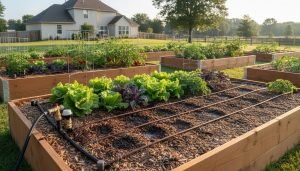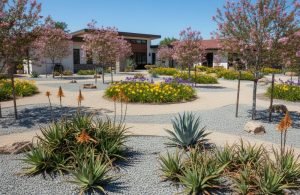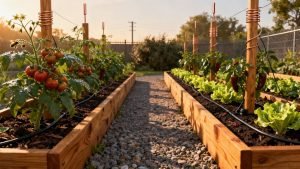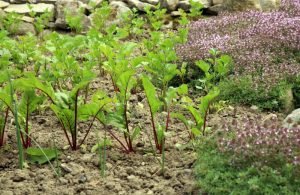Creating a safer yard starts with choosing fire-resistant plants, then arranging and maintaining them to slow embers, radiant heat, and surface flames. No plant is fireproof, but low‑flammability species with high moisture content and minimal resins can significantly reduce ignition risk. Pair those choices with smart spacing, hardscape breaks, and a maintained “defensible space” around the home. The result is a resilient, attractive garden that helps protect your property during red flag events.
Starter Plant Lists by Category: Choose the Right Fire-Resistant Plant
Contents
Use these region-adaptable starter lists to build a beautiful, lower-flammability garden that starts with the right fire-resistant plant. Treat each fire-resistant plant as part of a defensible space strategy.
Groundcovers and low growers
Low plants can shield soil, suppress weeds, and reduce radiant heat when well-hydrated and spaced from structures. Favor succulent or moisture-rich species that produce minimal dry litter and spread predictably: choose a fire-resistant plant for the first planting ring.
- Dymondia margaretae (Dymondia): Tiny, silver-green mats create a tight, low-fuel surface between pavers and along paths. Drought-tolerant with minimal litter, it’s excellent in Zone 0 when kept free of debris.
- Delosperma cooperi (Hardy ice plant): Succulent leaves hold moisture and resist ignition when hydrated, forming colorful carpets. Choose Delosperma species, not Carpobrotus “ice plant,” which can be invasive and produce heavy, fibrous thatch.
- Sedum spp. (Stonecrop, e.g., S. rupestre ‘Angelina’): Low, fleshy foliage stores water and sheds quickly after flowering, reducing persistent fuel. Many cultivars spread politely and stay short, ideal for edging noncombustible patios and walkways.
- Fragaria chiloensis (Coastal strawberry): Evergreen leaves and shallow runners form a neat, mowable mat with modest litter. Keep irrigated to maintain green cover: remove dried fruit and older leaves away from structures.
- Lippia nodiflora ‘Kurapia’ (Kurapia groundcover): Fast-establishing, sterile groundcover that stays green with modest irrigation and tolerates light foot traffic. Mow or shear occasionally to prevent thatch buildup: verify regional approvals and avoid planting in Zone 0.
- Carex pansa (California meadow sedge): A low, clumping sedge used as a lawn alternative that stays green with deep, infrequent watering. Mow or edge to limit dry leaf build-up and keep clearance from siding.
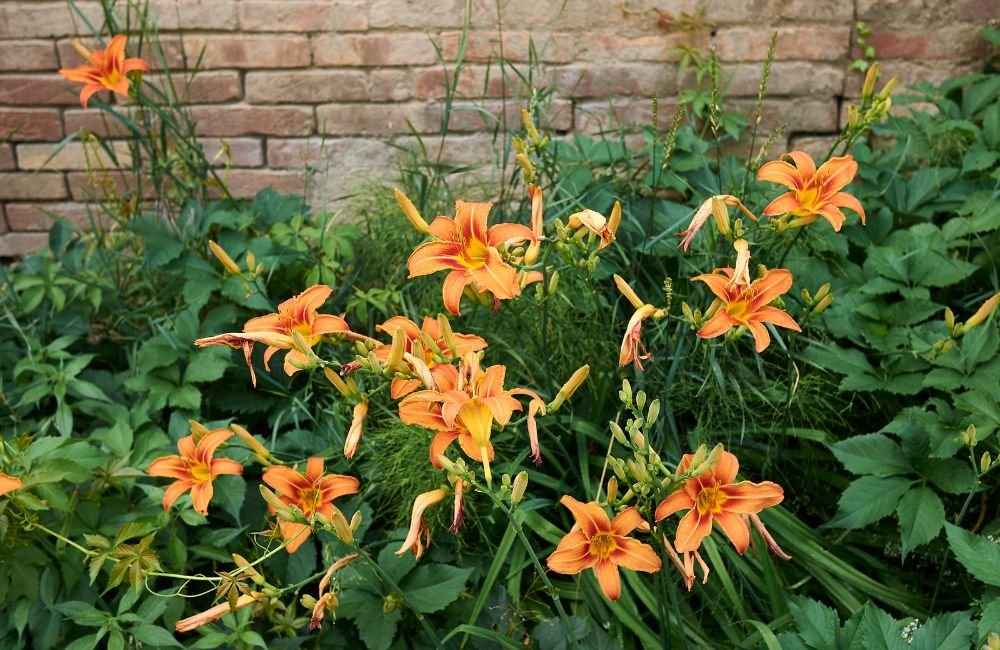
Succulents
Succulents hold water in their leaves and stems, making them hard to ignite when maintained. A fire resistant plant often has fleshy leaves and low resin content: site with breathing room, avoid under eaves, and remove spent flower stalks to limit fuels.
- Agave attenuata (Foxtail agave): Broad, spineless rosettes store water and create low, tidy fuel profiles when skirts are removed. Space rosettes from walls and walkways: prune off dried leaves and spent flower stalks.
- Aloe arborescens (Torch aloe): Moist, gel-filled leaves resist ignition and recover well after heat exposure. Keep clumps thinned and remove dry inflorescences: avoid planting directly beneath windows, vents, or eaves.
- Aeonium arboreum (Aeonium): Cool-season growth with fleshy rosettes provides high moisture content and little woody material. During summer dormancy, remove leaf drop and keep spacing to prevent fine-fuel accumulation.
- Crassula ovata (Jade plant): Water-laden stems and leaves make this shrub-like succulent relatively fire-resilient when maintained. Prune to open structure and keep a noncombustible strip between plants and structures.
- Hesperaloe parviflora (Red yucca): Tough, fibrous leaves and modest litter make it a durable accent for hot exposures. Remove spent flower spikes annually and avoid creating continuous bands along fences or walls.
- Curio repens (Blue chalksticks): Low, blue-gray succulent that forms dense, moisture-rich carpets with minimal debris. Best near hardscape: keep leaf litter cleared from within the mat and avoid pairing with wood mulch.
Perennials
Many herbaceous perennials retain moisture and die back cleanly, producing less woody fuel. Choose tidy growers with low resin, keep them irrigated and deadheaded to minimize litter and ember receptivity.
- Hemerocallis (Daylily): Moist, strap leaves and fleshy roots keep fuel moisture higher than many ornamentals. Shear back browned foliage and scapes promptly, and avoid dense masses against siding or decks.
- Iris germanica (Bearded iris): Thick rhizomes and upright fans offer structure with relatively low persistent fuel. Divide crowded clumps, remove dry leaves and bloom stalks, and maintain clear space around rhizome crowns.
- Tulbaghia violacea (Society garlic): Evergreen clumps with high leaf moisture and limited woody material suit foundation beds. Deadhead routinely and thin older foliage to discourage thatch along walls and pathways.
- Bergenia cordifolia (Bergenia): Large, succulent-like leaves create low, damp fuel and clean winter dieback. Excellent for shaded margins near hardscape: remove overwintered leaves in spring to prevent dry buildup.
- Heuchera spp. (Coral bells): Compact mounds with broad leaves produce minimal litter and respond well to regular deadheading. Use as colorful fillers in island beds with gravel or DG strips between groups.
- Lomandra longifolia (Mat rush): Clumping, strap-leaf perennial that maintains form without excessive thatch when annually combed or cut back. Place in Zone 1 with spacing: keep skirts trimmed and away from structures.
Small trees and shrubs
Small woody plants can offer beauty and shade without creating ladders into canopies. Favor open branching, broad leaves, and low litter: prune regularly and keep crowns separated from structures, fences.
- Lagerstroemia indica (Crape myrtle): Deciduous canopy and smooth bark reduce year-round surface fuel, with modest litter easily managed. Prune lower suckers, maintain clearance from eaves, and keep mulch thin and moist farther from trunks.
- Camellia sasanqua/japonica (Camellia): Broad, glossy leaves and a naturally open habit can be maintained with light thinning. Keep canopies lifted, remove flower litter, and maintain a gravel strip where shrubs approach foundations.
- Arbutus unedo (Strawberry tree): Evergreen with relatively low litter and firm leaves when irrigated, offering a clean trunk for vertical separation. Periodically remove berry drop and thin interior shoots to keep airflow and spacing.
- Citrus spp. (Citrus: lemon, orange): Moist, evergreen foliage and water-laden fruit make citrus comparatively fire-resilient when irrigated. Prune to an open structure, keep weeds and mulch pulled back from trunks, and maintain distance from buildings.
- Cercis occidentalis (Western redbud): Small, deciduous tree with broad leaves and limited resin content, ideal for open, well-spaced placements. Limb up to raise the canopy and prevent ladder fuels from shrubs beneath.
- Malus domestica (Apple): High-moisture foliage and timber combined with a deciduous habit reduce persistent fine fuels. Prune annually to open the canopy and remove fallen fruit and leaves promptly during fire season.
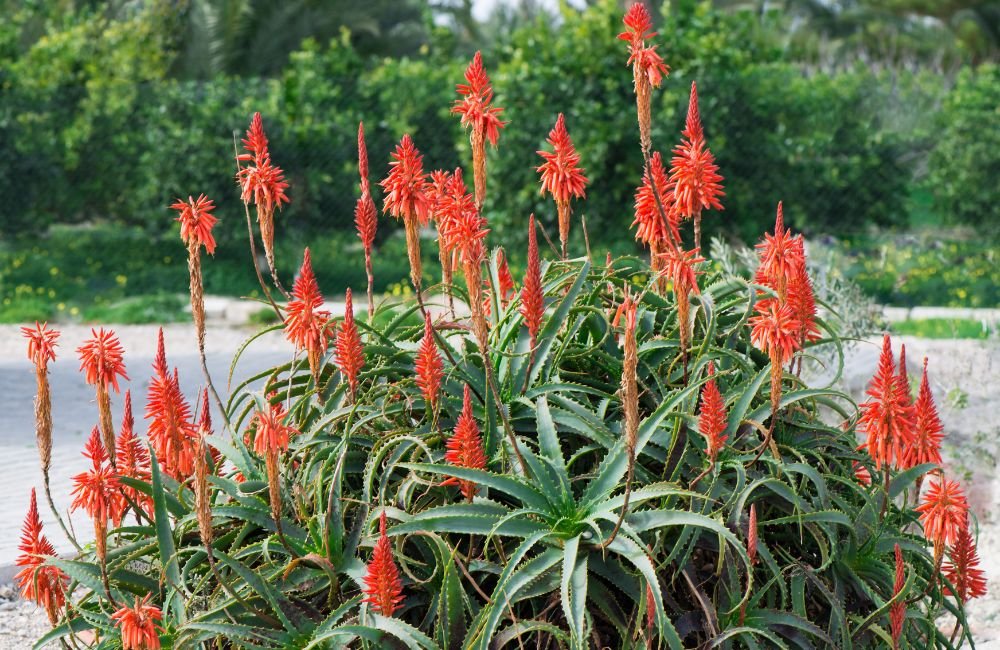
Defensible Space Basics: The Three Zones That Save Homes
Defensible space organises your landscape into zones that slow embers, radiant heat, and flames while aiding firefighters. Combine hardscape, spacing, maintenance, and fire resistant plants to materially lower ignition risk.
Zone 0 (0–5 Feet): Ember-Resistant, Noncombustible Zone
Zone 0 is the immediate 0–5 feet around structures, decks, and attachments. Keep it entirely noncombustible: gravel, concrete, pavers, or bare soil. Remove wood mulch, shrubs, trellised vines, stored items, doormats, and cushions.
Clean roofs and gutters, install ember‑ and pest‑resistant vent screens, and seal gaps. Maintain clearances under siding and fences, and use only nonflammable decor. Relocate containers and furniture indoors on red flag days.
Zone 1 (5–30 Feet): Lean, Clean, and Green
In Zone 1, arrange vegetation in small, separated islands with hardscape or gravel ribbons between groups. Keep lawns short, prune shrubs to open structure, and limb trees up 6–10 feet or one‑third of height.
Use drip irrigation to sustain moisture while limiting growth. Select fire-resistant plants with low resin and minimal litter, and maintain 2–3 feet of clearance from siding, decks, and wooden fences.
Zone 2 (30–100+ Feet): Reduced Fuels and Breaks
Zone 2 emphasizes thinning and separation. Remove ladder fuels beneath tree canopies, space shrubs in clumps, and maintain wider gaps on slopes to reduce flame lengths. Keep annual grasses mowed, dispose of downed limbs, and maintain driveways, paths, or irrigated areas as fuel breaks.
Favour tough, drought‑tolerant choices and integrate fire-resistant plants in dispersed groupings: keep canopies limbed up and prevent vegetation from forming continuous corridors.
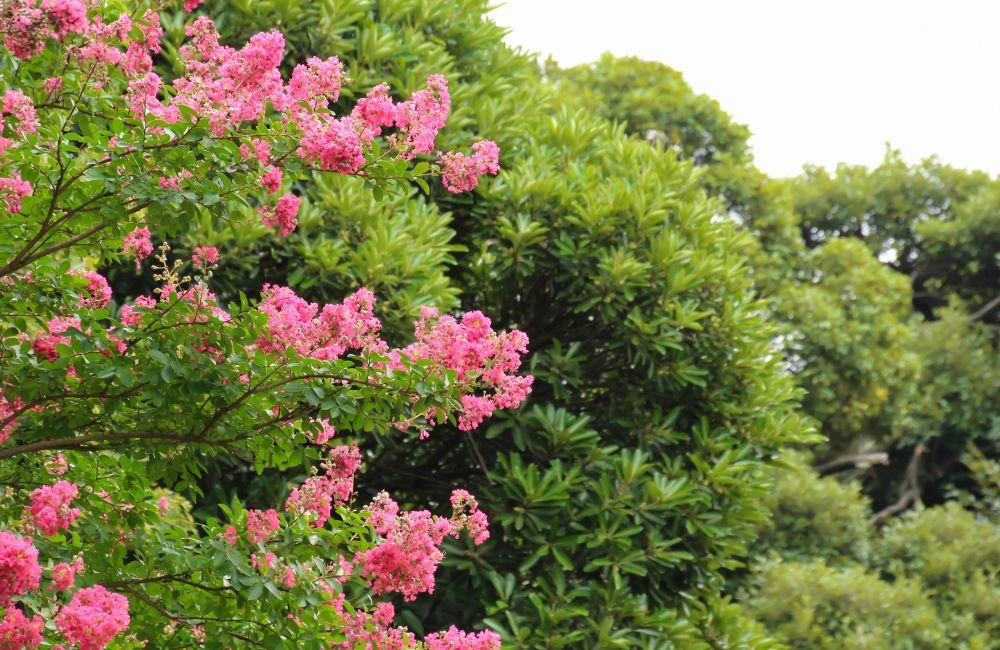
Lessons from the January 2025 Palisades Fire
The January 2025 Palisades Fire in Los Angeles burned 23,448 acres, destroyed 6,837 structures, and caused 12 fatalities, making it the most destructive wildfire in the city’s history, driven by powerful Santa Ana winds and extreme dryness. Beyond the tragedy, it offered clear, practical lessons for home gardeners: embers ignite homes more often than walls of flame, the first 0–5 feet around your house is critical, and selecting and maintaining fire-resistant plants can meaningfully reduce risk.
What recent events teach us about embers, wind, and urban interface risk
- Ember storms carried by high winds ignite receptive fuels, mulch, leaf litter, wood fences, dead plant material, and debris in gutters, far ahead of the main fire. In Palisades, intense winds and low humidity created conditions where small ignition points rapidly grew into destructive fire runs.
- Takeaway: Treat your home and immediate surroundings as a single ignition system. Harden the structure and create an ember‑resistant landscape in tandem.
Conclusion
Incorporating fire-resistant plants with smart spacing, hardscape breaks, and vigilant maintenance makes a beautiful yard that also lowers wildfire risk. Prioritize Zone 0 and structure hardening, clean roofs and gutters, screen vents, and remove combustibles near the house, then extend defensible space outward in phases. Choose region‑appropriate, low‑flammability species, irrigate to maintain live fuel moisture, and prune, thin, and remove litter so your landscape resists embers and radiant heat.

